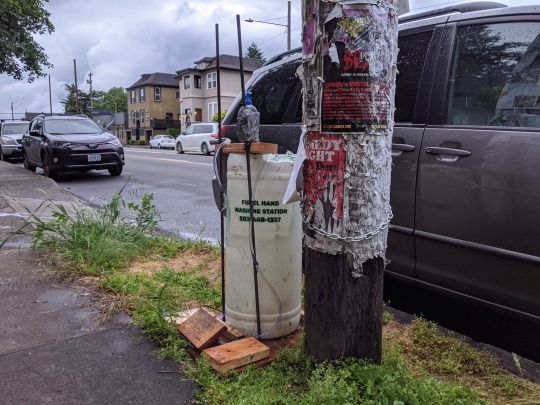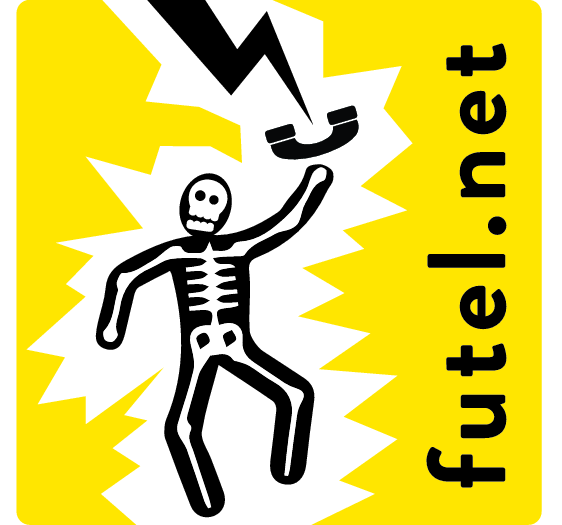Handwashing Station Construction Notes

Manifest
- primer bulb
- this is a rubber bulb that moves liquid in one direction between 2 barbs
- about 6 inches between barbs
- 3-9 ft vinyl tubing
- length depends on barrel used
- length depends on conduit used
- ID should match primer bulb barbs
- plastic barrel
- PVC conduit, elbows, barbs as needed
- depends on barrel used
- plywood, plank, 2x4, 2x2, etc. lumber
- 6 ft rebar x2
- hinge eg gate or door
- soap dispenser
- zip ties
- duct tape
- strapping
- conduit brackets or plumbers tape
- screws, other fasteners
- chain or cable as needed, lock
Construction
Cut plywood base to size to support barrel, toes, bulb pedal. Mark where toes should go in plywood base.
Drill two holes in plywood base at circumference of barrel for rebar. Drill holes in plywood base for zipties to attach bulb, tubing.
Screw lumber toes to base to laterally support base of barrel and protect pump pedal. Assemble pedal out of plank and hinge and attach to base with hinge toward user. Attach pump to base under hinge with zipties.
If needed, drill holes near top of barrel for chain or cable. Drill hole in barrel lid for input conduit. Screw lumber shelf to barrel lid. Assemble spigot out of conduit and barb. Attach spigot to shelf with brackets and/or zipties.
Place barrel on base, within toes. Hammer rebar into earth through holes in base. Ziptie rebar to shelf. Strap rebar to barrel.
Assemble input conduit, easiest is a length of conduit sawed with a 45 degree end, long enough that it can’t fall in the barrel when placed in the hole.
Assemble tubing to pump. Ziptie tubing to base and rebar, routing so that toes protect tubing on base. Assemble outlet tubing to spigot. Place input conduit in hole. Thread tubing through input conduit until it nearly reaches bottom of barrel.
Ziptie and duct tape soap dispenser to rebar.
Prime pump by pouring water down output tubing until pump can be actuated.
Thread chain or cable through holes in barrel. Lock to stationary object.
Notes
Barrel can be remote from pump and spigot or inaccessible, alter base in that case to support pump and spigot.
Input conduit just keeps the input at the bottom of the barrel and discourages people from yanking the tubing out, input conduit can be replaced with weight and a conduit T at end of input tubing.
Design is intended to be cheap, easy to source, annoying to steal or strip, easy to service and replace. A trap at the spigot will make pumping easier. Graywater basin has been eliminated for ease of cleaning, this means that the spigot has to be inconveniently located to keep water away from pumper’s foot. This is not our best deployed design but it’s cheaper (if barrels are available), easier, and less labor to build.
Archive
